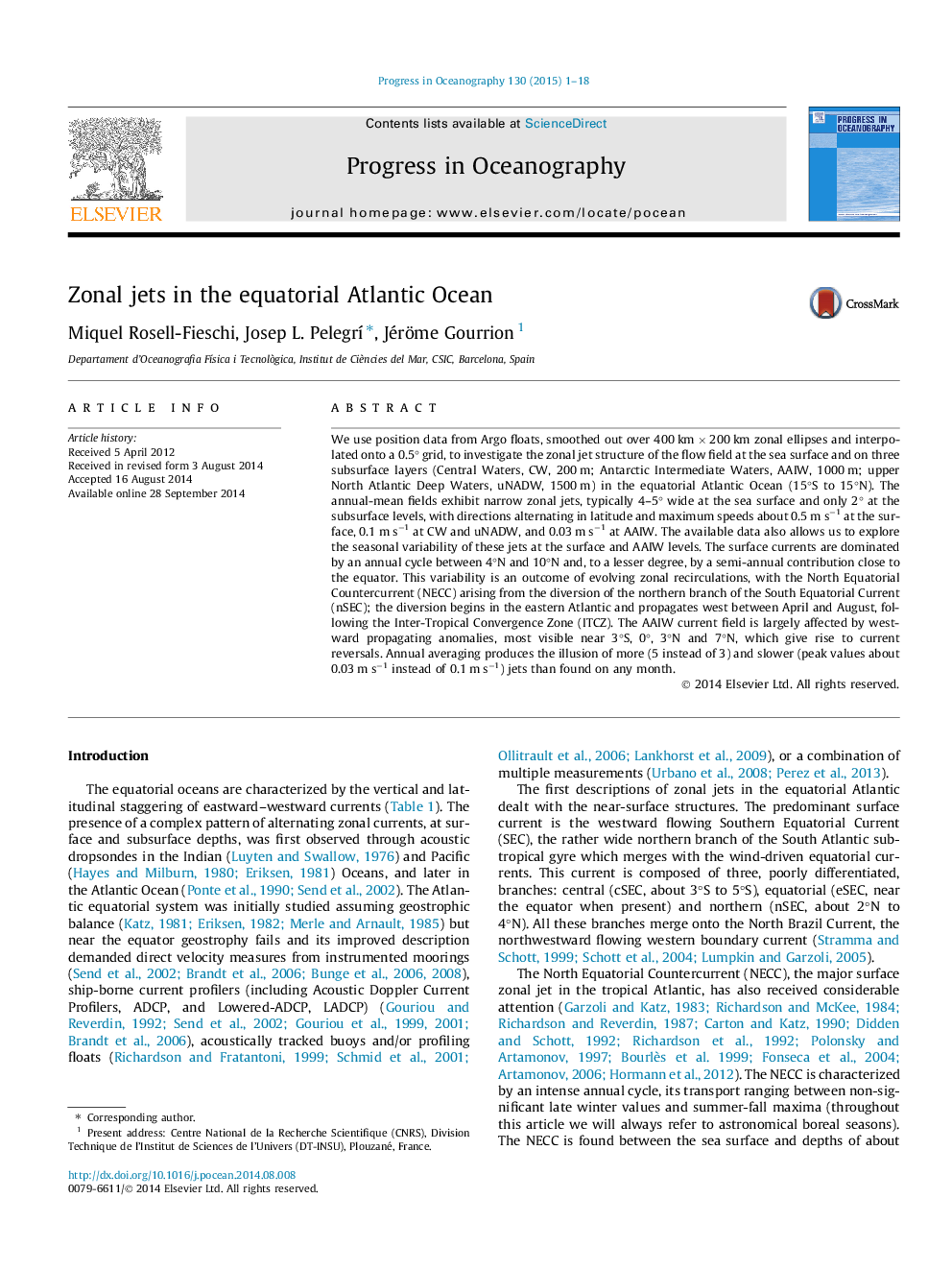| Article ID | Journal | Published Year | Pages | File Type |
|---|---|---|---|---|
| 6388517 | Progress in Oceanography | 2015 | 18 Pages |
•We use all available Argo data to investigate the zonal current system in the equatorial Atlantic Ocean.•The mean velocity fields are calculated at the surface and three other depths: 200 m, 1000 m, and 1500 m.•The monthly surface fields reveal the relevance of the Inter Tropical Convergence Zone on driving zonal recirculations.•The 1000 m velocity fields are largely affected by the passage of westward propagating waves.•Argo data is a very useful tool to decipher the velocity fields with unprecedented spatial and temporal resolution.
We use position data from Argo floats, smoothed out over 400 km × 200 km zonal ellipses and interpolated onto a 0.5° grid, to investigate the zonal jet structure of the flow field at the sea surface and on three subsurface layers (Central Waters, CW, 200 m; Antarctic Intermediate Waters, AAIW, 1000 m; upper North Atlantic Deep Waters, uNADW, 1500 m) in the equatorial Atlantic Ocean (15°S to 15°N). The annual-mean fields exhibit narrow zonal jets, typically 4–5° wide at the sea surface and only 2° at the subsurface levels, with directions alternating in latitude and maximum speeds about 0.5 m s−1 at the surface, 0.1 m s−1 at CW and uNADW, and 0.03 m s−1 at AAIW. The available data also allows us to explore the seasonal variability of these jets at the surface and AAIW levels. The surface currents are dominated by an annual cycle between 4°N and 10°N and, to a lesser degree, by a semi-annual contribution close to the equator. This variability is an outcome of evolving zonal recirculations, with the North Equatorial Countercurrent (NECC) arising from the diversion of the northern branch of the South Equatorial Current (nSEC); the diversion begins in the eastern Atlantic and propagates west between April and August, following the Inter-Tropical Convergence Zone (ITCZ). The AAIW current field is largely affected by westward propagating anomalies, most visible near 3°S, 0°, 3°N and 7°N, which give rise to current reversals. Annual averaging produces the illusion of more (5 instead of 3) and slower (peak values about 0.03 m s−1 instead of 0.1 m s−1) jets than found on any month.
